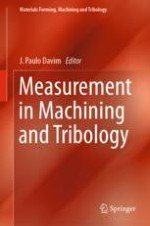2019 | OriginalPaper | Chapter
2. The Role of Oxygen in Orthogonal Machining of Metals
Authors : Pedro A. R. Rosa, Afonso V. L. Gregorio, J. Paulo Davim
Published in: Measurement in Machining and Tribology
Publisher: Springer International Publishing
Activate our intelligent search to find suitable subject content or patents.
Select sections of text to find matching patents with Artificial Intelligence. powered by
Select sections of text to find additional relevant content using AI-assisted search. powered by
